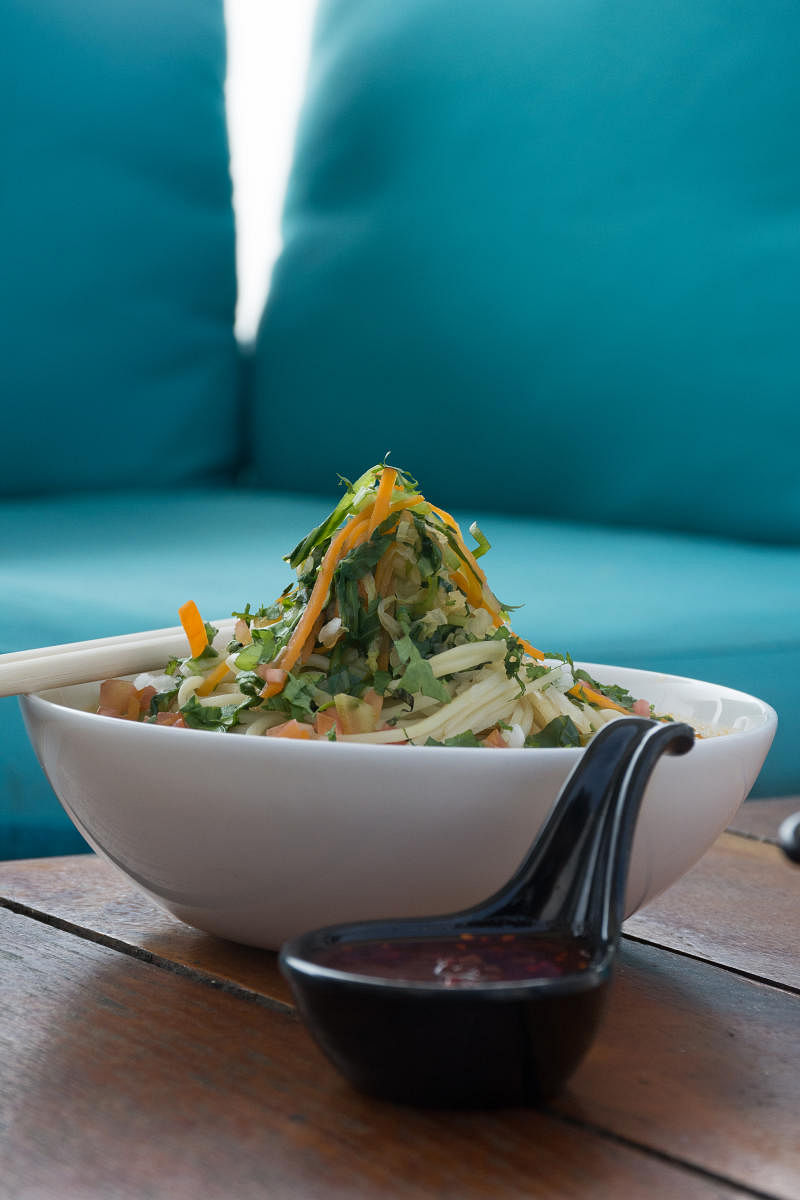
The mind whispers beatitude when you imagine Tibet. Still mostly an enigma to the rest of the world, winter rules the landscape of this mountainous country with an average elevation of 16,000 feet and temperatures that often drop way below zero in the winter months. It doesn’t take much to imagine that the cuisine of the region is all about warmth and energy. However, not many know about what Tibetans eat — this seems like yet another secret that’s hidden in the folds of a warm shahtoosh.
The geography does not allow many vegetables to grow — only hardy ones like cabbage, corn, carrots and potatoes are able to survive its harsh winters.
Secondly, as our waiter at High Ultra Lounge at Sheraton Grand sweetly told us, “we are all mostly nomads”. This means the cuisine fashions itself out of what is available — a lot of barley, dairy and meat. The nomads of the region prefer yak meat while the farmers mostly consume mutton and beef. However, if there is one universal favourite of Tibetans then that is butter, closely followed by cheese. There’s also salted butter tea — for those who have the stomach for it. However, if you are looking for an easier introduction to Tibetan cuisine, you should perhaps begin with dried yak cheese. Don’t judge it by its looks — it is lined, greyish and looks at least hundred years old. Bite into its hard exterior and instantly it springs into shocking tanginess, not unlike the effect blue cheese has on beginners. The soothing lemongrass tea was a great accompaniment to this unusual starter as was the gingery Galangal chang, a sort of Tibetan mocktail if you will.
That’s how we began savouring the Tibetan dishes on offer at the pan-Asian rooftop restaurant, which is hosting a 10-day Tibetan food festival from January 17 to 26. On offer is an a la carte menu for dinner that promises “as much authenticity as possible” in its sourcing of meats and condiments. As befits the chilly climate, the dishes are all hearty and are meant to be consumed as one-pot meals. The bowls are deep and give the impression of being filled to the brim with goodness. ‘Mokthuk’ indeed was. A whole meal soup into which are dunked stuffed dumplings, it was warm, nutritious and filling.
We went on to attack the fried momos that were next on the agenda. These look like the hilly cousins of good-old ‘kadubu’. Called ‘Sha Phaley’, these are fried momos that secretly want to be pies. Shaped like half-moons, the filling is traditionally minced beef or lamb. Surprisingly though, the vegetarian version with potato and local cottage cheese, scored better. While we were still licking our fingers, came what is, arguably, the centrepiece of Tibetan cuisine — the thupka. We opted for the beef thupka, which was soul satisfying, except for its rather high salt content. In fact, all the dishes were a bit saltier than we preferred — but again, it could be a matter of taste.
By this time, the tummy was full enough to protest but there was dessert and who can say no to sweet sticky rice? Prepared with butter and dried fruit, its charm was in the minimal use of sugar. Despite its apparent heaviness, the sticky rice settled the stomach into, beatitude, yes that’s the word.